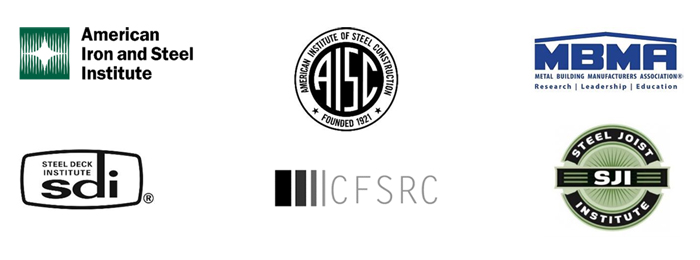Initiative Advances Seismic Performance Of Steel Floor And Roof Diaphragms
Washington, DC - A significant research project encompassing five years of work with over $2 million of industry and National Science Foundation (NSF) funding has concluded, with results that significantly advance the seismic performance of steel floor
and roof diaphragms.
 |
During the Steel Diaphragm Innovation Initiative (SDII), researchers at three major universities reengineered steel diaphragms for seismic performance, considering them as a system that works as an integral part of a building. The work has resulted in
the adoption of new provisions in seismic codes and standards that will increase the already high level of seismic safety of steel buildings, lead to more efficient design, and enhance steel as the material of choice for sustainable seismic solutions.
SDII also provided a long-term roadmap to further innovative pathways and solutions that will ensure efficient, robust, resilient steel building systems, with specific focus on the role of the floor and roof system in the seismic performance of steel
buildings, in the future.
Steel deck diaphragms have a number of strengths—low weight, use of recycled material, competitive cost, and potential redundancies from a large number of connection points between the diaphragm and other structural elements. In addition, steel
diaphragm systems may be realized across a wide range of stiffness (from bare steel deck to concrete-filled floor and roof systems), giving designers a great deal of flexibility.
However, prior to SDII the available data was not gathered together and largely focused on the strength of isolated systems instead of ductility or whole-building performance. The SDII set out to advance the seismic performance of steel floor and roof
diaphragms used in steel buildings through better understanding of diaphragm-structure interaction, new design approaches, and new three-dimensional modeling tools. Its final report is available for free download at https://bit.ly/3mgEC9p, and a one-hour seminar summarizing SDII activities was recently provided online at NASCC: The Virtual Steel Conference, available to view at https://bit.ly/3yk4RkW.
The SDII was created in 2015 when the American Iron and Steel Institute (AISI) partnered with the American Institute of Steel Construction (AISC), Metal Building Manufacturers Association (MBMA), Steel Deck Institute (SDI), Steel Joist Institute (SJI)
and the Cold-Formed Steel Research Consortium (CFSRC), which includes researchers from Johns Hopkins University, Virginia Tech, Northeastern University and Walter P. Moore.
More information can be found at www.steeli.org.